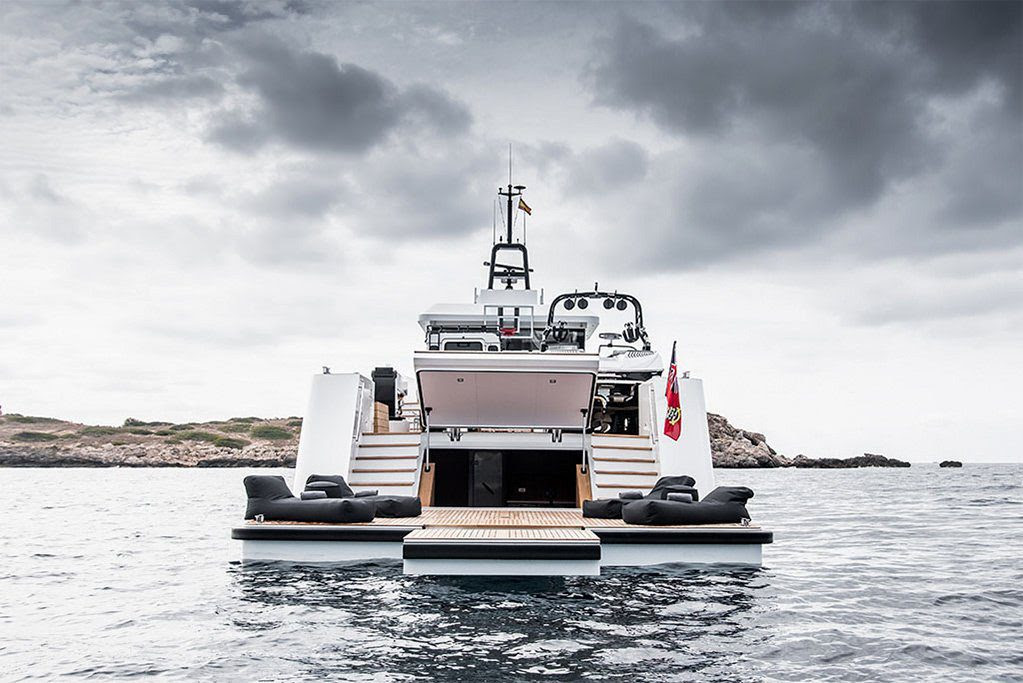
Why do superyacht owners like Jeff Bezos need a 75 m support vessel?
All of the Cannes Film Festival stars weren’t on the Red Carpet, some were on the big blue at anchor in the Bay of Cannes.
While most people were looking at the Palais des Festival, others were turned towards the ocean where Jeff Bezos’ yacht and chase yachts were at anchor.
The new 127 m Oceanco sailing yacht Koru and his 75m support vessel Aebona were recently delivered to become the Jeff Bezos fleet.
So why does a yacht owner need a superyacht and yacht vessel, especially when considering the small difference of sizes between both yachts.
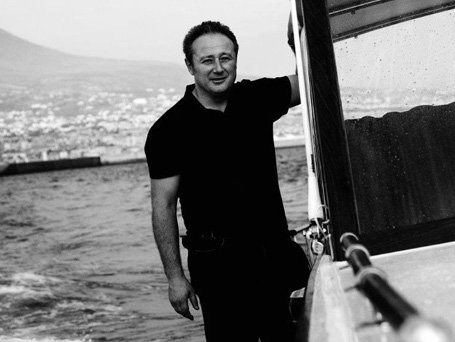
Slim Bouricha, President of Lynx Yachts shares his expert knowledge on the question: “Though having the support vessel smaller than the main yacht may seems like a conventional choice, this is not always the case. Lynx delivered a YXT24 to an owner of a 70m yacht, but also delivered the same to the owner of a 24m yacht. There is also a 6711 Damen sea axe that use to run alongside a 50m yacht.”
Founded in 2013, by Slim Bouricha, a mechanical engineer and a seasoned yachtsman, founded Lynx Yachts in 2013 and quickly surrounded himself with a team of specialists and yachting enthusiasts like himself.
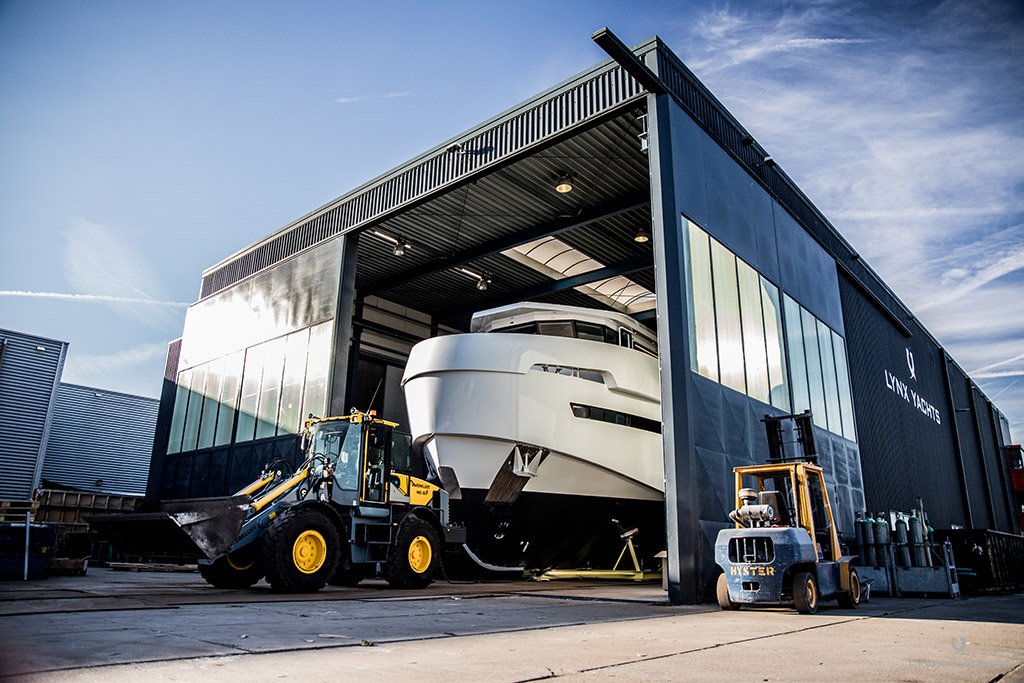
Slim confines:All superyacht owners don’t have a support vessel, and continues, “The bigger a yacht is, the bigger the needs are for various toys and tenders. Captains (and owners) of large yachts are always happy to free prime real estate and have all the big equipment on the their support vessels; this is also where all the day to day maintenance can occur.”
Support vessels’ purpose is mainly to transport the main’s yacht toys, such as helicopter, tenders, jet skis… and crew. Do main yachts still have cabins for some of the crew, what’s the usual ratio?
Slim continues “there is really no ratio. The main yacht is always designed to be self sufficient to carry a decent amount of reasonably sized toys and tenders. Support vessels increase exponentially the carrying capacity for much larger equipment such as limo tenders, helicopters, fishing or wakeboard boats, submarines, etc…. These require additional crew for operating and maintenance.The main yacht can lift the anchor and leave in much less time leaving the support vessel behind to lift all the tenders onboard. Another example is laundry; unless you are in a very large mega yacht, laundry areas are cramped and it is a real benefit to be able to have done on the support vessel.
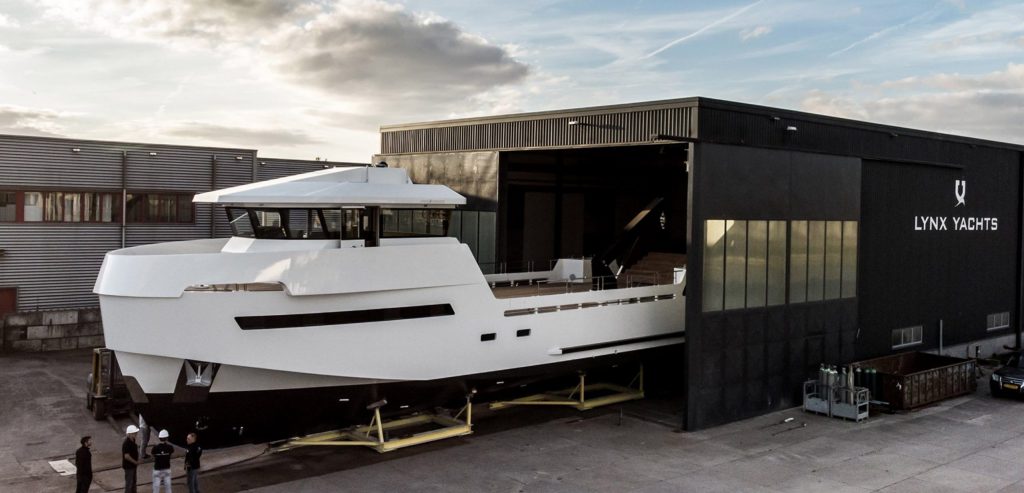
In the case of Jeff Bezos, Sailing Yacht Koru and Motor Yacht Abeona were built by two different shipyards. Slim explains that “Today there are two brands known for building yacht support vessels: Damen with their Sea Axe line and Lynx yachts with their YXT line. They each occupy a different segment of the market. The specialization so to speak is not just about building a support vessel, but rather understanding the key design features required in a support vessel and their implications on engineering. This is why there are not many companies around that build such vessels.
In Bezos’ case, both of the yachts were delivered together. It seems not all owners of support yachts have both yachts done at the same time. Bouricha adds that
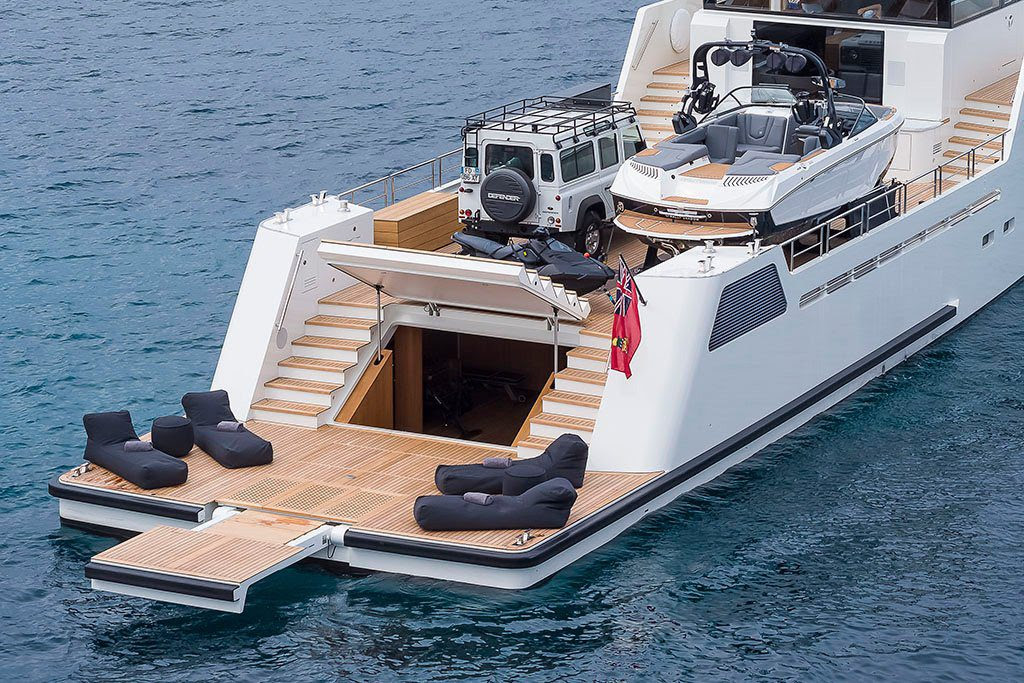
“Some owners, for example, may feel that they are outgrowing their yacht and a support vessel can be the answer; it would cost less for an owner of a 40m yacht to acquire a YXT24 than upgrading to a 50m.”
Lynx yachts launched its first yacht, Heliad II (now renamed Robbie Bobby), a 33m yacht in May 2013. Since then the shipyard based in the Netherlands has built six yachts and developed several models, always anticipating the requests from passionate yacht lovers. Striving to deliver an unparalleled experience to owners, the experts on board the Lynx Yachts team dedicate their knowhow and experience to ensure the success of each unit built by the shipyard.
